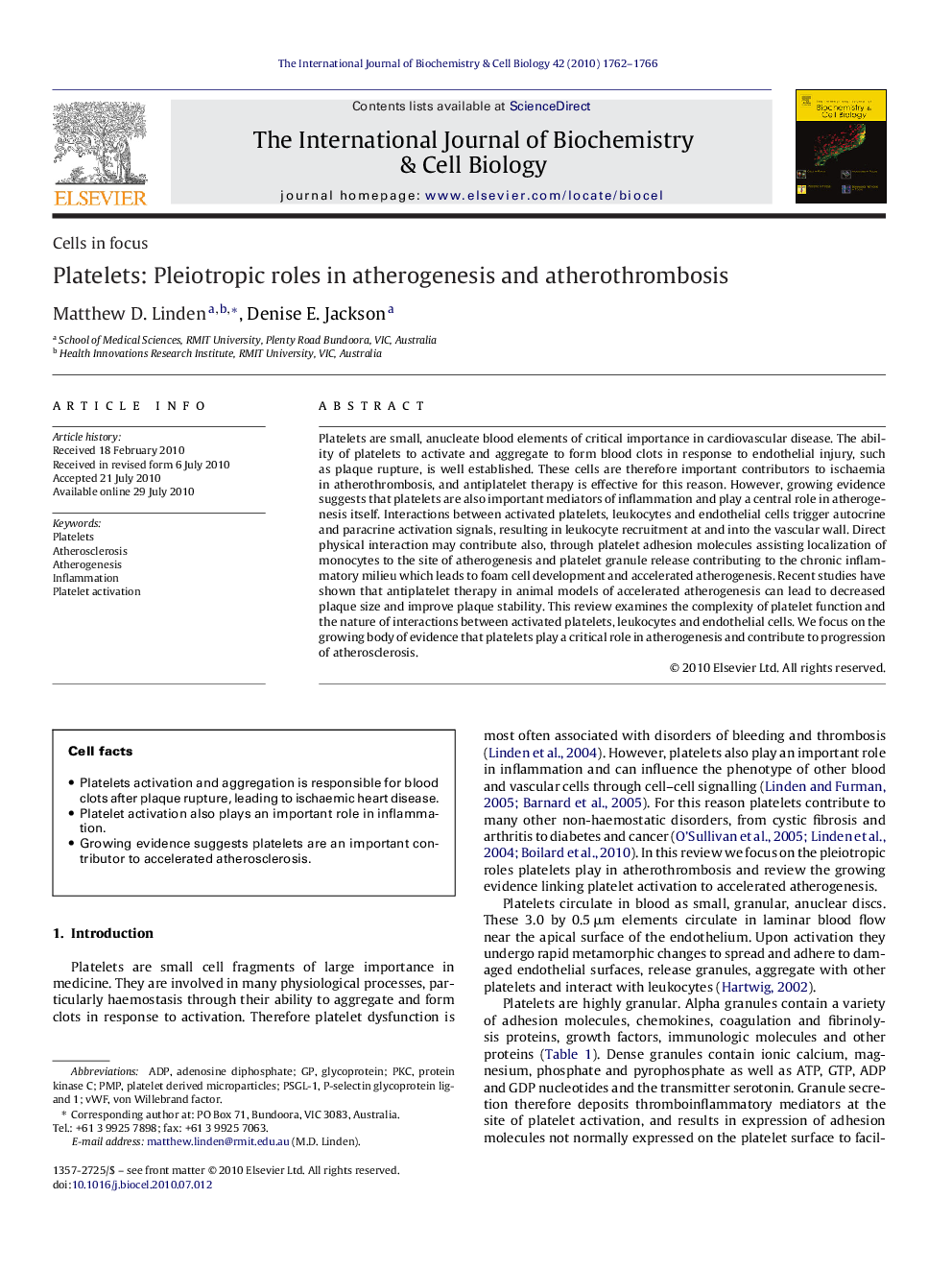| Article ID | Journal | Published Year | Pages | File Type |
|---|---|---|---|---|
| 1984296 | The International Journal of Biochemistry & Cell Biology | 2010 | 5 Pages |
Platelets are small, anucleate blood elements of critical importance in cardiovascular disease. The ability of platelets to activate and aggregate to form blood clots in response to endothelial injury, such as plaque rupture, is well established. These cells are therefore important contributors to ischaemia in atherothrombosis, and antiplatelet therapy is effective for this reason. However, growing evidence suggests that platelets are also important mediators of inflammation and play a central role in atherogenesis itself. Interactions between activated platelets, leukocytes and endothelial cells trigger autocrine and paracrine activation signals, resulting in leukocyte recruitment at and into the vascular wall. Direct physical interaction may contribute also, through platelet adhesion molecules assisting localization of monocytes to the site of atherogenesis and platelet granule release contributing to the chronic inflammatory milieu which leads to foam cell development and accelerated atherogenesis. Recent studies have shown that antiplatelet therapy in animal models of accelerated atherogenesis can lead to decreased plaque size and improve plaque stability. This review examines the complexity of platelet function and the nature of interactions between activated platelets, leukocytes and endothelial cells. We focus on the growing body of evidence that platelets play a critical role in atherogenesis and contribute to progression of atherosclerosis.
